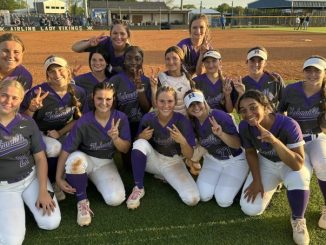
Anglers catching plenty of trophy bass in diversion-fed lake
Over the past three months, nearly 9,000 Florida largemouth bass fingerlings, all between 4 to 6 inches in length, have been stocked into Lake Cataouatche.
This is the third year that the Louisiana Department of Wildlife and Fisheries has stocked Florida bass into the popular fishing spot. In 2003 and 2005, 14,512 bass were loaded into Cataouatche, which has led to trophy-sized bass being pulled out of the lake in recent years.
“Last year, many fishermen reported catching largemouth bass weighing over eight pounds and up to 10 pounds,” Tim Ruth, a biologist supervisor with the LDWF, said. “These reports have sparked debate and interest among fisheries biologists.
“Are these reported catches the result of stocking Florida bass in the lake, or are they the result of freshwater and nutrient input from the nearby Davis Pond Diversion?”
This year, the LDWF will begin a project to help answer those questions.
For the next three years, biologists will collect bass from the lake, remove liver tissue samples and have them evaluated for genetics. These genetic tests will determine if the fish from the samples are native bass, Florida bass or hybrids.
“Results revealing relatively high proportions of any one of these sub species could allow biologists to determine the effectiveness of Florida bass stocking in a water body similar to Lake Cataouatche,” Ruth said.
Florida-strain bass are preferred by anglers because they grow to large sizes much more rapidly than native largemouths.
The state’s intensive Florida bass stocking program is largely responsible for a relatively recent surge in trophy-bass production. Louisiana’s top 10 bass – including Greg Wiggins’ 15.97-pound state-record – have all been caught since 1992.
Florida largemouth fingerlings are hatched each spring at the Booker Fowler Fish Hatchery near Forest Hill. A portion of the fingerlings are brought each year to the Huey P. Long Fish Hatchery in Lacombe. The fingerlings are generally 1 inch in length and total 1,800 fish per pound when they arrive in Lacombe.
They are released into five rearing ponds, where they are raised for nine months.
“Care is taken to control predators, algae and disease and to maintain optimal water quality in each pond,” Ruth said. “Golden shiners, fathead minnows and bluegill are introduced as forage for the bass during their stay in Lacombe.”
During the winter months, these rearing ponds are drained, and Phase II Florida largemouth bass are harvested. Phase II bass are generally 4 to 6 inches in length and total 12 to 20 fish per pound.
“Research has shown that Phase II fingerlings have a higher survival rate when released into the wild,” Ruth said. “Harvest and stocking takes place during the winter because cooler water temperatures decrease fish stress and increase survival.”
The bass were transported to different areas in the lake with high dissolved oxygen, abundant food supply and plenty of cover to hide.
These stockings are not intended to restock, replenish or repopulate the lake, Ruth said. In fact, recent electrofishing samples from the fall of 2009 reveal no evidence of overfishing or of largemouth bass stock depletions.
“However, we will begin extensive electrofishing sampling in April with follow up again in the fall,” Ruth said. “Of course, this extensive sampling will continue for at least the next three years while we also evaluate the integration of Florida bass.”
The information gained from the sampling coupled with a survey of anglers will help the LDWF formulate strategies for the lake.
“Indeed, we hope that the addition of this year’s stock of Florida bass will provide anglers with the opportunity for more trophies in the near future,” Ruth said.




Be the first to comment